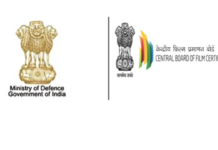Noble intents are often defeated if not coupled with practicality. Such is the case with the Copyright Amendment Act of 2012 (“Amendment Act”). An Act originally introduced as a welfare legislation for the benefit of authors and performers has not yet seen the light of implementation despite lapse of over five years since it came into effect. There has been a lot said about the history behind the Amendment Act, the investigations on IPRS, PPL and recently the ED investigation on the music labels. However, I wish to highlight some of the glaring ambiguities in the Amendment Act which has resulted in utter chaos in interpreting the Amendment Act.
• Section 17– Section 17 of the Copyright Act (“Act”) deals with first ownership of copyright. The proviso to Section 17 as introduced by the Amendment Act reads as under:
“Provided that in case of any work incorporated in a cinematograph work, nothing contained in clause (b) & (c) shall affect the right of the author in the work referred to in clause (a) of sub Section 1 of Section 13”
The proviso was introduced to clarify that the rights of the authors of underlying works incorporated in a cinematograph work shall not be affected by the agreement being on a commissioned work basis or a contract of service under Section 17(b) and (c) of the Act. With the introduction of the aforesaid proviso to Section 17, the Amendment Act has made a distinction between the actual author of the work and the first owner of the copyright in such work, in respect of the works referred to in clause (a) of sub Section 1 of Section 13 of the Act.
As a result of the said amendment, authors of underlying works in cinematograph films/ sound recordings argue this proviso in their favor to interpret that authors cannot be engaged on a commissioned work basis or under a contract of service and that it is mandatory to obtain an assignment of the work from such authors.
Further, that the said proviso has been introduced to negate the Supreme Court’s judgement in the case of Indian Performing Rights Society v/s Eastern India Motion Pictures Association [1977 AIR SC 1443) which laid down that the rights of the music composer or lyricist can be defeated by the producer of the cinematograph film in the manner laid down in provisos (b) and (c) of Section 17 of the Act. Thus, if a producer enters into a contract of service with an author of work, the producer continues to be the first owner with respect to the work incorporated in the film. The relevant portion of the said judgment is reproduced below as under:
“The right of a music composer or lyricist can however be defeated by the producer of a cinematograph film in the manner laid down in proviso (b) and (c) of Section 17. According to proviso (b), when a cinematograph film producer commissions a composer of music or a lyricist for reward or valuable consideration for the purpose of making his cinematograph film or composing music or lyrics therefor i.e. the sounds for incorporation or absorption in the sound track associated with the film, he becomes the first owner of copyright therein and no copyright subsists in the composer or lyricist unless there is a contract to the contrary between the composer and the producer. The same result follows according to proviso (c) if the composer of music or lyrics is employed under a contract of service or apprenticeship to compose the work”.
The argument taken by the producers is that the proviso to Section 17 protects the moral rights and royalty rights of the author which shall not be affected even if the author is engaged under contract-of-service in accordance with Section 17 (c) or if the producer is owner of cinematograph film as per Section 17 (b) by engaging an author under a commissioned work i.e. to say that this proviso does not bring an end to the ability of the producer to enter into a “contract of service” or engage into a commissioned work with the author of underlying works.
I am personally in agreement with the argument taken by the producers. Had the intent of the Amendment Act been to take away the ability of the producer to engage authors on a commissioned work basis/ contract of service, then adequate amendments should have been introduced in Section 17(b) and (c) of the Act. The intent however does not seem to be to take away first ownership rights of producers by taking away the right to engage authors on a work for hire basis. The intent seems to be aligned with protecting the right of the authors to receive royalties as granted under Section 18 and 19 of the Act. However, the ambiguous wording of Section 17 proviso gives rise to varied interpretations which could have been avoided had the language been clearer.
• Section 18- Section 18 of the Copyright Act deals with assignment of copyright.
The three critical provisos which have been introduced under sub-section 1 of Section 18 are as under:
“Provided further that no such assignment shall be applied to any medium or mode of exploitation of the work which did not exist or was not in commercial use at the time when the assignment was made, unless the assignment specifically referred to such medium or mode of exploitation of the work” (“First Proviso”)
“Provided also that the author of the literary or musical work included in a cinematograph film shall not assign or waive the right to receive royalties to be shared on an equal basis with the assignee of copyright for the utilization of such work in any form other than for the communication to the public of the work along with the cinematograph film in a cinema hall, except to the legal heirs of the authors or to a copy right society for collection and distribution and any agreement to contrary shall be void” (“Second Proviso”)
“Provided also that the author of the literary or musical work included in the sound recording but not forming part of any cinematograph film shall not assign or waive the right to receive royalties to be shared on an equal basis with the assignee of copyright for any utilization of such work except to the legal heirs of the authors or to a collecting society for collection and distribution and any assignment to the contrary shall be void” (“Third Proviso”)
First Proviso: The First Proviso restricts assignment of copyright to any medium or mode of exploitation of the work which did not exist or was not in commercial use at the time when the assignment was made, unless the assignment specifically referred to such medium or mode of exploitation of the work.
As a result of the First Proviso, in all agreements where assignment of copyright is taken, the assignee needs to take caution that it mentions all possible modes and mediums of exploitation in existence and commercial use as on the date of the agreement. This has resulted in all assignment agreements mentioning all possible modes, mediums and formats which could be as wide to include language such as the following: “physical; mechanical; magnetic; analogue; optical; electric; electronic; wireless; terrestrial; satellite; cable; landline telephony; mobile telephony; data services such 2G, 3G, 4G, VOLTE, LTE; internet telephony; internet; streaming; webcasting; simulcasting; downloading; uploading; P to P; internet telephony; radio; television; biotechnological; nano-technological; nuclear; molecular…..”
Further, since Section 18 is not applicable mutatis mutandis to Section 30 of the Copyright Act which deals with licenses by owners of copyright, typically all assignment agreements capture a perpetual license of rights in future modes and mediums of exploitation which are not in commercial use and existence on the date of entering the agreement.
The language of such perpetual license clause typically reads as under:
“The Assignor is aware and hereby acknowledges that new rights in addition to the rights assigned to the Assignee may come into being and/or be recognized in the future, under the law and/or in equity (hereafter the “New Exploitation Rights”), and Assignor is also aware and does hereby acknowledge that new (1) technology, (2) uses, (3) media, (4) formats, (5) modes of transmission and (6) methods of distribution, dissemination, exhibition or performance (hereafter the “New Exploitation Methods”) are being and will inevitably continue to be developed in the future, which would offer new opportunities for exploiting the assigned work. In the event the Assignor has any rights in and to the assigned work including New Exploitation Rights and New Exploitation Methods that cannot be assigned to Assignee by operation of law and cannot be so waived, the Assignor, in lieu of the consideration, the sufficiency of which is hereby acknowledged, hereby grants to the Assignee an exclusive, irrevocable, worldwide, license during the term of copyright to reproduce, distribute, modify, publicly perform and publicly display, with the right to sublicense and assign such rights in and to the Assignee including without limitation, the right to use in any way whatsoever the assigned works. To the extent any of the foregoing provisions is ineffective under applicable laws, Assignor hereby provides and shall provide any and all ratifications and consents necessary to accomplish the purposes of the foregoing.”
In view of the Amendment Act failing to capture the applicability of the First Proviso on license of copyright, clauses such as above would clearly circumvent the intent of bringing the First Proviso into effect and render it redundant.
Second and Third Proviso:
The Second and Third Proviso to Section 18 introduced by the Amendment Act, 2012 place a restriction on the author of a literary and musical works which is included in a cinematograph film or a sound recording from assigning or waiving the right to receive royalty and which royalty is to be shared by the author on an equal basis with the assignee of the copyright for the utilization of such work in any form (other than for the communication to the public of the work along with the cinematograph film in a cinema hall, in case of literary and musical works in cinematograph films).
As a result of the said provisos, authors of literary and musical works of cinematograph films such as script, screenplay, dialogue writers, lyricists, music composers, background music composers, etc. are entitled to a non-assignable right to receive royalties for utilization of such works expect theatrical exhibition. The author is not entitled to assign or waive the right to receive this royalty except to his legal heirs or to a copyright society for collection and distribution of royalty. The proviso further lays down that any agreement to the contrary shall be void.
These two provisos can be said to be the main reason behind introducing the Amendment Act. Though originally intended for the benefit of lyricists and music composers who were denied royalties by IPRS, the language of the provisos extends to the benefit of all authors of literary and music works incorporated in a cinematograph film or sound recording which has resulted in the Screenwriters Rights Association of India applying for registration as a copyright society. Since the provisos require royalties to be shared on an equal basis between authors and assignees, it would be interesting to see as to how would film rights be exploited if SRAI is granted registration as a copyright society.
The key area of concern with the Second and Third Proviso is the lack of clarity on how these royalty payments would be made. While a reasonable assumption would be to read these provisos with Section 33 of the Act and related provisions dealing with copyright societies, tariff schemes and distribution schemes, Section 18 fails to provide such clarity. This has resulted in the authors not receiving their royalties in the last five years post the Amendment Act coming into force. It would also be interesting to see as to how would royalty payments be made in case of music labels not becoming members of IPRS and dealing independently with their sound recording rights as done through agencies such as Novex Communications.
Another confusion with the language of these provisos is the lack of clarity on whose responsibility is it to make payment of these royalties. For instance, there was a lot of hue and cry amongst music labels since they assumed that the responsibility of royalty payments lies on their shoulders. However, content on its own does not attract royalties. It is only on the exploitation of such content that royalties become payable. Thus, unless the music label is exploiting the content on its own platform, logically the royalties would be required to be paid by the entity communicating the work to the public such as broadcasters, digital platforms, etc. The least the Government could have done was to have a clarification issued in this regard and a requirement to keep a contingent fund of payment of royalties upon a copyright society coming into existence.
Section 19-
Section 19(3) of the Act provides that the assignment of copyright in any work shall also specify the amount of royalty and any other consideration payable to the author or his legal heirs during the currency of the assignment and the assignment shall be subject to revision, extension or termination on terms mutually agreed upon by the parties.
It is unclear as to how would the amount of royalty be mentioned in any assignment agreement if the intent of the Amendment Act is that royalties be paid by the copyright society as per its distribution scheme. This ambiguous wording of Section 19(3) has resulted in several producers/ music labels introducing a clause on advance royalties i.e. where a portion of the consideration is declared as advance royalties and paid to the authors.
Section 19(9) of the Act effectively creates in the author of any work who has assigned the right to make a cinematograph film based on his work, the right to claim an equal share of royalties and consideration payable in the case of utilisation of the work in any form other than for communication of the work along with the cinematograph film in a cinema hall.
Section 19(10) creates a similar right in the author of any work who has granted an assignment to use his work to make a sound recording when his work is utilised in any form.
Section 19(9) and (10) include all works i.e. literary, musical, artistic and dramatic works unlike the fourth and fifth provisos in section 18 which is limited to literary and musical works.
Since the verbiage of Section 19(9) and (10) does not contain restrictive language on non-assignment or waiver of right to receive royalties by the authors of literary and musical works as provided in Section 18, it could be interpreted that with respect to works other than literary and musical works i.e. artistic and dramatic works, there is no restriction on taking waiver/ assignment of the right to receive royalties. This has resulted in agreements for authors of dramatic and artistic works such as a choreographer agreement (dramatic work) or a costume designer agreement (artistic work), having language on waiver or assignment of royalty rights.
• Section 33: Registration of Copyright Society
A new proviso has been added in Section 33(1) which reads as under:
“Provided further that the business of issuing or granting license in respect of literary, dramatic, musical and artistic works incorporated in a cinematograph films or sound recordings shall be carried out only through a copyright society duly registered under this Act;”
As a result of the said new proviso to Section 33, no entity other than a copyright society can carry on the business of issuing or granting license in respect of literary, dramatic, musical and artistic works incorporated in a cinematograph films or sound recordings.
However, since Section 33 permits an owner of copyright in his individual capacity to continue to have the right to grant licences in respect of his own works, the purpose of the Section 33 proviso seems to be redundant since music labels may choose not to join the copyright society and carry on their assignments/ licenses independently as done by Novex on behalf of several music labels.
[Refer to Leopold Café & Stores & Anr vs Novex Communications Pvt. Ltd (Bom HC-Notice of Motion (L) No. 1451 OF 2014), EEMA vs Union of India-(Del HC-WP(C)- 12076/2016]
• Section 38A-
Section 38(A) (2) which deals with royalty rights of performers provides as under:
“Once a performer has, by written agreement, consented to the incorporation of his performance in a cinematograph film he shall not, in the absence of any contract to the contrary, object to the enjoyment by the producer of the film of the performer’s right in the same film:
Provided that, notwithstanding anything contained in this sub-section, the performer shall be entitled for royalties in case of making of the performances for commercial use.”
Whether the royalty rights provided to the performers is assignable or non-assignable has been debatable. The producers insist on taking a waiver of royalty rights of performers on the ground that the performer cannot be treated at par with an author of literary and musical work and hence the proviso to Section 38(A)(2) does not contain restrictive language as provided in Section 18 for authors. The performers on the other hand interpret that Section 39-A of the Copyright Act which provides for certain provisions to apply in case of performer’s rights, includes Section 18 and 19 and hence the royalty rights of performers are non-assignable.
Another argument which goes against performers is that a performer’s right under Section 38A of the Copyright Act vests only in a live performance. The “right to perform a song in public” or “grant licenses” in respect of the same is an exclusive right given to the owner of musical work and literary work of a song under Section 14 of the Act and not to the singer of that song. The right includes the exclusive right to exploit the song by way of a “live performance” or by “making a recording thereof”. It is such a “performance” that is contemplated under Sections 2(q), 38 and 38A of the Act and is also eligible for royalty, if any.
Further Section 38(A) (2) refers to only performance made in a cinematograph film and does not make any reference to performance made in a sound recording not forming part of a cinematograph film. Going by the strict interpretation of the said section, performers of sound recordings are not entitled to receive royalties. For instance, if a song is played on any platform such as radio, digital platforms etc without the visual being shown, royalties may not be payable. However, this interpretation would be absurd given that the intent of the Amendment Act is to make royalties payable to performers.
A lot of these flaws could have been avoided had the draftsmen taken into account as to how would these provisions be implemented in practice. Quoting Mr. Kapil Sibal’s speech on 18th May, 2012 for passing the Copyright Amendment Bill, 2010: “So, the authors are now sharing the ownership of the copyright. They are equal partners in this enterprise; they equally share it. And, therefore, the copyright societies which collect the royalties, collect the monies, will share those monies equally with the authors. And that is the amendment that was required under The Copyright Act, and that we have done so that the authors and other owners are also equally represented in these societies.”. In my view, this intent itself seems flawed. Right to receive royalties and ownership of copyright are two separate concepts and should not be merged. While authors and performers should receive their royalties, there should be no interference in the right of the producer to freely exploit the rights of his film. Further, an author or performer is given a fixed consideration for their services which is separate and in addition to the royalties stipulated under the Amendment Act. Mr. Sibal’s entire speech makes references to royalties as profits which is again a flawed analogy as profits means the overflow received post recoupment of investment, which is not what the Amendment Act seems to be suggesting.
There are several petitions challenging many of the abovementioned provisions of the Amendment Act which are pending before the Calcutta High Court [Eskay Video Pvt. Ltd vs Union of India (WP. 14979(W)/2016) and Bombay High Court (Indian Broadcasting Foundation v/s Union of India- WP 2116/2013). It is important that these cases be decided at the earliest to bring some clarity on the Amendment Act. In the interim, each side would try ways and means to circumvent the Amendment Act in its favour.
Image source: here



















[…] I had written a post titled ‘A Flawed Amendment’ where I had talked about why I feel the Copyright Amendment Act, 2012 is a grossly flawed amendment […]
[…] https://iprmentlaw.com/2018/01/09/a-flawed-amendment/ […]